How To Transfer A Data Through A Radio Waves!
Once we’ve been asked if that is possible to transfer a data through the Radio wave. The idea of looking at the main types of modulation seemed pretty interesting.
Let’s try to figure out, without formulas and as simply as possible, how you can transfer data from point “A” to point “B”.
OOK (On-Off Keying)
The simplest form of digital coding. Just turn on/off the transmitter in accordance with the binary wave:
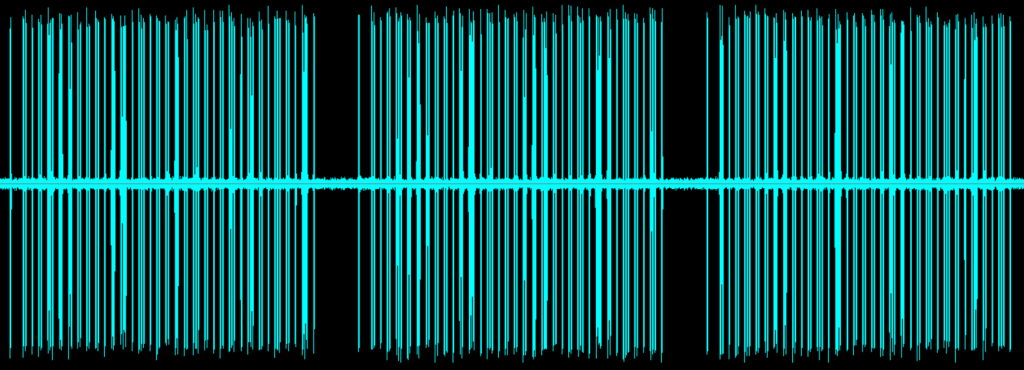
On the spectrum, such a wave looks something like this, there are quite a few of them at ~ 433 MHz:
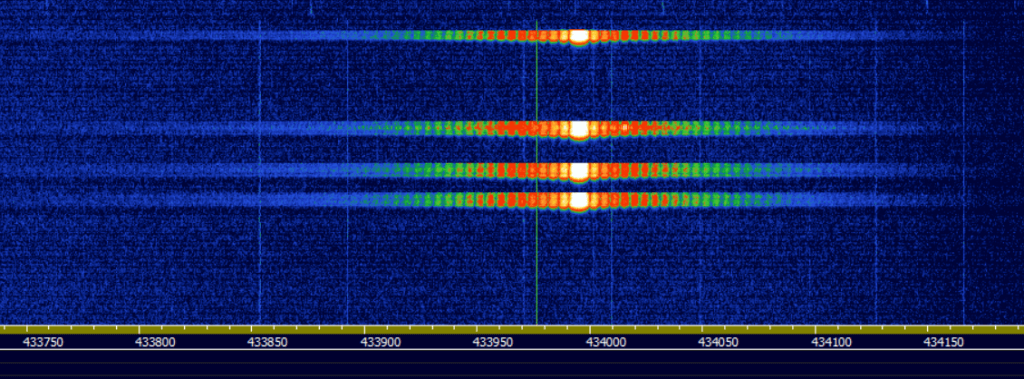
The transmitter circuit is very simple, therefore it is actively used in wireless remotes, radio buttons and other devices at a price of $ 1-2. There is usually no encryption here, the frequency and bit sequence are hard-wired, anyone can transmit and receive a wave, so I would not put such a remote control on the garage door where the Lamborghini stands, but it will do for a bedside lamp (such a lamp bought in the nearest MediaMarkt has been working for me for 3 years, there have been no false alarms, the principle of “elusive Joe” in action).
It is interesting to note that historically this is probably one of the earliest modes of radio transmission. If you turn on/off the transmitter with a key and receive the wave by ear or on paper tape, we get the good old Morse code.
Amplitude modulation (AM)
We will probably be able to see AM for a long time – modulation is used both in broadcasting stations and in transmitters of the 118-137 MHz air band. A distinctive feature of AM is that the spectrum is symmetrical about the center frequency. “By eye” you can even roughly understand what is being transmitted, speech or music. Screenshot from Websdr Twente Online Receiver:

Historically, AM was one of the first ways to receive and transmit speech – the well-known “school” detector receiver circuit was extremely simple, and did not even require batteries for reception – high-impedance headphones had enough radio wave energy to work. It is curious that such receivers were mass-produced in the USSR right up to the 60s:
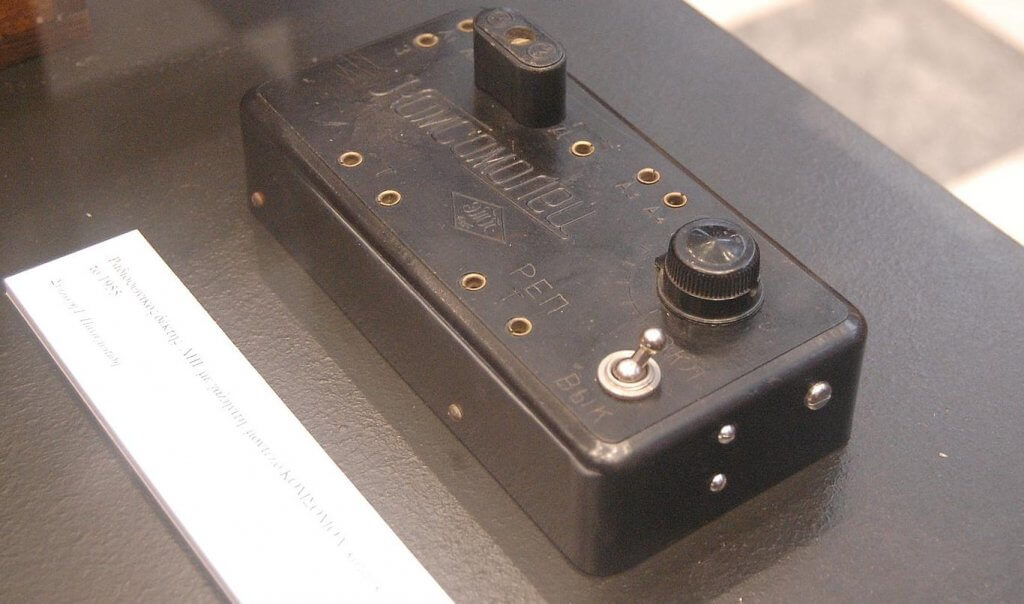
Apparently, there were certain problems with the availability of both receivers and power sources in the outback, so the detector receiver remained relevant for a long time.
SSB modulation (USB, LSB, SSB)
SSB modulation is a special case of amplitude modulation. As mentioned above, the AM wave spectrum is symmetrical about the center. But it is possible to transmit only “one half” of the wave, which provides a greater range with the same transmitter power:
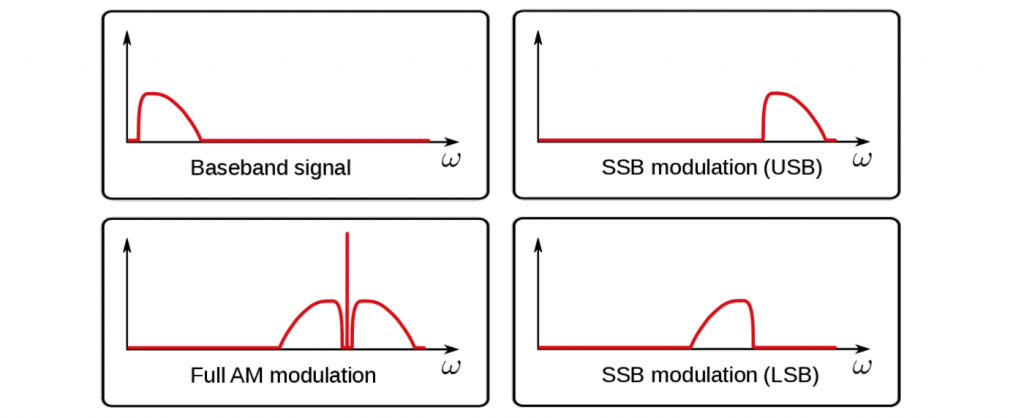
As you can see from the picture, you can tune to the upper or lower sideband, such a mode in the receiver or transmitter is respectively designated USB or LSB.
In the single-sideband modulation mode, service stations operate, weather reports are transmitted on short waves, and it is also used by radio amateurs. But it is no less important because in the USB or LSB mode the wave spectrum is actually transferred from the radio frequency to the sound one without distortion – which allows you to receive various types of digital waves, discussed below. It is important to keep this in mind when choosing a radio receiver – digital modes of communication (FSK, PSK, etc.) can be received and decoded only in the single-sideband modulation mode, a simple household receiver supporting “normal” AM will not be able to receive such waves.
Frequency Modulation (FM)
The well-known FM broadcasting works in frequency modulation. It is interesting to note that not only sound is encoded in the transmitter of an FM station – a complex wave is transmitted, including mono and stereo channels, pilot tone, RDS, etc. In order not to be confused with “normal” FM, engineers usually call this modulation WFM (Wide FM). In the HDSDR program, it is easy to see the spectrum of the radio station after decoding:
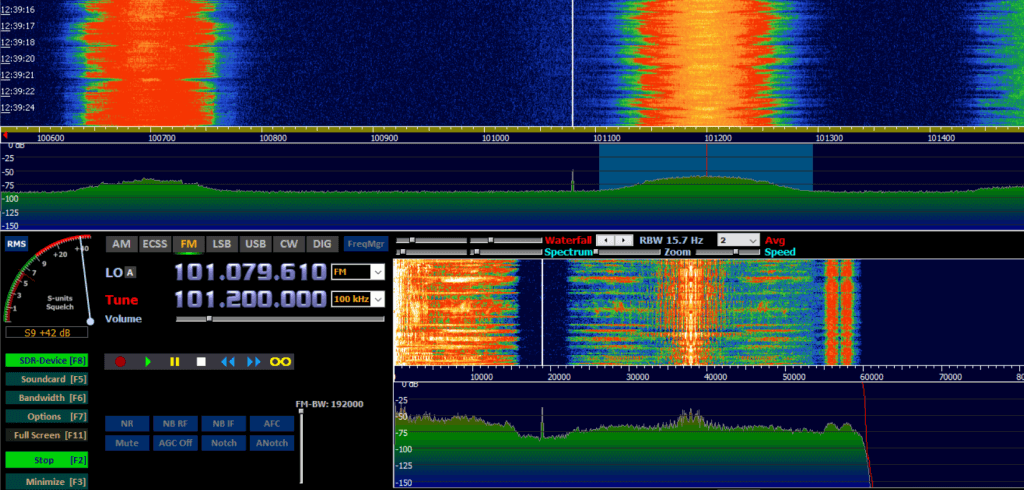
On the wave (bottom right), it’s easy to see the pilot tone at 19 kHz, RDS, mono and stereo FM broadcast channels. Unlike WFM, baby monitors, walkie-talkies and other similar devices use “narrow” FM (NFM, Narrow FM) modulation, where only sound is transmitted.
Frequency modulation is actively used for digital waves, in this case switching of two frequencies can be used to transmit a binary code. An example is the wave of the German station Pinneberg, the presence of two frequencies is clearly visible on the spectrum:

Pinneberg transmits weather reports to ships on long, medium and short wave. Frequencies, in principle, can be more than 2x. An example of such a wave is an FT8 amateur radio:
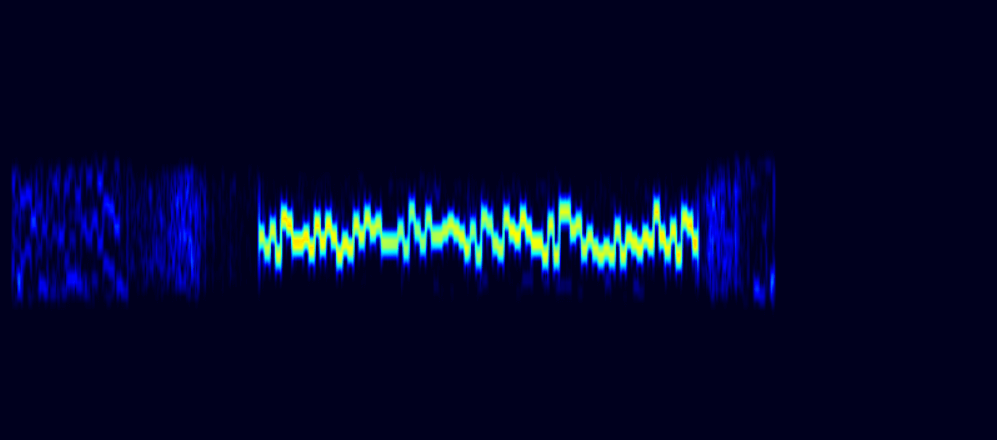
With the FT8, radio amateurs can exchange short messages over a distance of several thousand kilometers with only a few watts of power.
Interestingly, modulation can be combined – for example, in aviation, the ACARS system is used, which transmits text messages. The digital FM wave is transmitted through the AM transmitter. Why is it so hard? Probably, a ready-made transmitter is used, to the input of which a digital circuit was simply connected to form an FM wave. Legacy in its purest form, but it’s probably cheaper than replacing millions of transmitters in airports and aircraft around the world.
Phase modulation (PSK)
In addition to the frequency, we can also change the phase of the wave, which gives us phase modulation. Such waves can be reliably received over long distances and are used in particular in satellite communications. Of the amateur radio protocols, PSK31 can be noted, which at one time was very popular.

With the help of PSK31 it is possible to exchange information in the form of “text chat” by connecting the transceiver to a computer. There can be more than 2 phases, for example 4, 18 or 16, it all depends on the speed and communication channel.
It is possible to change both the phase and the amplitude at the same time, which gives us even greater speed, but requires more complex encoding and decoding. QAM is an example of such a signal. The simplest way to visualize such a signal is on the phase plane:
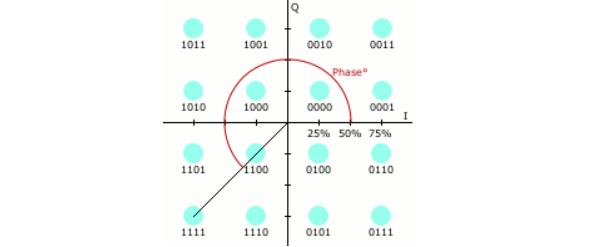
QAM modulation is used for data transmission in the LTE standard and in digital television DVB-T.
Orthogonal frequency-division multiplexing (OFDM)
One of the modern modulation methods is OFDM. Its essence lies in the fact that individual bits of the wave can be transmitted in parallel, representing the wave as independently operating frequency channels (subcarriers), each of which transmits its own separate bit. There are certain mathematical rules to ensure that the channels will not cross and can be decoded.
DRM can be cited as an example, waves of this format can be seen on broadcast bands, the difference between AM and DRM is clearly visible on the spectrum:

It is a 10 kHz wide digital wave with 206 carriers transmitted in parallel at 47 Hz intervals. DRM (Digital Radio Mondiale) standard is used to transmit digital radio on medium and short wavelengths, please do not confuse with another Digital Rights Management standard.
OFDM is also used in WiFi (802.11a), the wave structure is more complicated there, those who wish can study the PDF on their own.
Code-division multiple access (CDMA)
Another way of broadband transmission is data sharing. Data for multiple recipients can be combined into one wave using a special function (eg Walsh code) that guarantees both forward and backward conversion. One of the key factors in both OFDM and CDMA is the so-called “orthogonality”, the received wave must not be “mixed” in order to extract the original data from the resulting wave.
CDMA coding is used in 3G mobile networks. A good example of parsing CDMA using pen and paper can be found here, I recommend to those interested to look.
Conclusion
All that is given above is, of course, a very short explanation “on the fingers”, in reality, the description of only one decoder can take several times more text than the entire article, and it is unlikely that many people need it here – SmartSmart is still not scientific blog. However, I hope the readers still have the general impression. If the audience is interested (which will be determined by the text estimates :), one of the wave can be analyzed in more detail.
In conclusion, it is interesting to note that various coding schemes are not just some kind of mathematical abstraction – all this is actively used, including for military purposes (for example, the STANAG protocol of NATO modems). This screenshot was taken while writing the text with the Websdr online receiver:
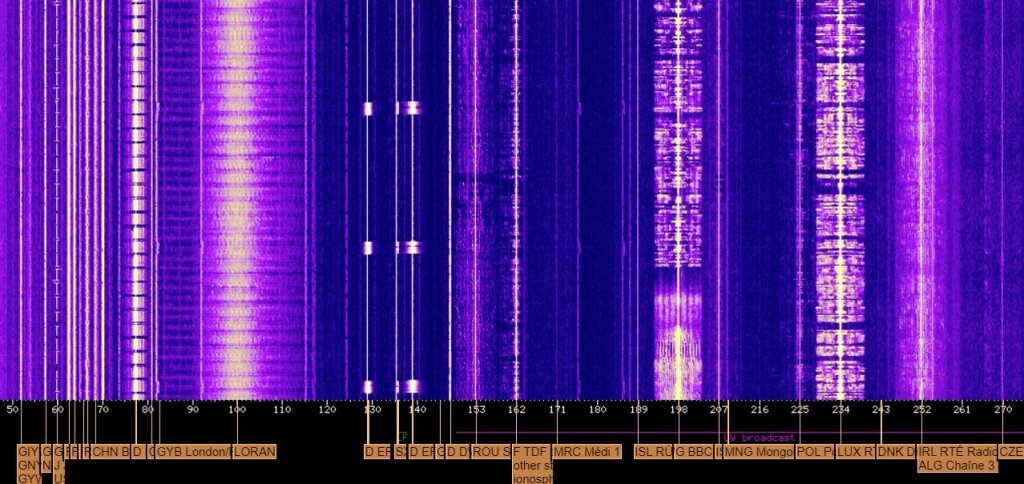
As you can see, despite the presence of the Internet in almost any inhabited place of the planet, the ability to transfer data directly, anonymously and without intermediaries is very relevant – each line on the graph is a communication channel that is working right now (and yes, attentive readers can even notice the alphabet waves here Morse code despite 2020).





